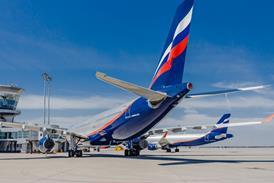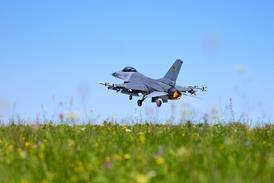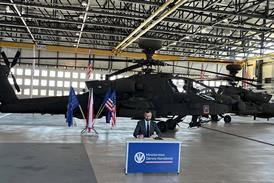THE BOEING-LED team bidding to develop the US Air Force's new Airborne Laser (ABL) theatre missile-defence system has conducted successful tests of key subsystems.
The consortium dubbed Team ABL, says, that tests of a TRW-built high-energy laser and Lockheed Martin-produced beam-control system has demonstrated the performance, which is needed for the programme.
The ABL is designed to shoot down a theatre ballistic-missil, during the boost phase, while the weapon is still over its launch area, using a megawatt-class laser carried by a Boeing 747-400F loitering "hundreds of kilometres" away over friendly territory.
Boeing and a Rockwell-led team, have submitted bids for the ABL programme-definition and risk-reduction phase expected to exceed $1.1 billion, with contract award scheduled for November.
The ABL will be used to detect and locate a missile seconds after launch using an infra-red search-and-track system, which will provide targeting information for the beam-control/fire-control system.
A high-resolution infra-red sensor will then be used to locate the missile plume and provide fine tracking for an illumination laser, which will be used to locate the missile body and provide precise positioning information for the high-energy laser.
A beacon laser will then be used to obtain atmospheric-correction signals for the high-energy laser, significantly increasing the energy on target.
According to Team ABL, tests of a scaled laser-beam control system addressed a key issue - how to point and focus the laser at long range despite aircraft movement, atmospheric distortion and fast-engagement times.
The Lockheed Martin "brassboard" beam-control system simulated the flight hardware, aircraft disturbances and atmospheric effects, and validated the acquisition and tracking hardware and algorithms, the team says.
Team-member TRW had previously demonstrated a "several-hundred-kilowatt-class" chemical oxygen-iodine laser representing a full-power prototype of the "building-block" laser module which Team ABL intends to use to build the full-scale system.
The tests measured output power and chemical efficiency and met the performance requirements needed to produce the ABL.
Source: Flight International




















